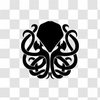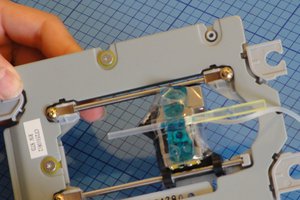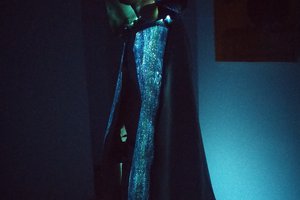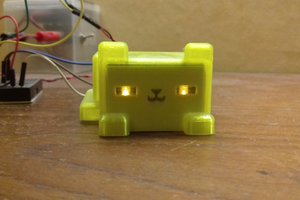Before I get into the details, here's a video of what it sounds like.
This was shot on a Blackmagic Cinema Pocket Camera 4k and a Olympus 12-40mm f2.8 for those interested in such things.
I call this one "cythemic rotary transmission". Cythemic is supposedly the opposite of being anemic, so I thought that was fitting due to the color of the light being transmitted by the light pipes. The rotary part refers to the motor, obviously. Speaking of the motor, the sound is directly controlled by its speed. First, beneath the shiny end of each light pipe, there is an LDR. These LDRs form the lower resistors in voltage dividers. The voltage at the dividers go to comparators hidden under the motor, which send digital signals to both the Daisy Seed and CD4017 counters in each "wing". The wings house four LEDs each, and they progress a bit further through their little sequence for each time the rotary blade passes between the light pipe and the LDR. The signal sent from the comparators to the Daisy is used to trigger a step sequencer loaded with an array of frequencies from the harmonic series. That was all fine and dandy until I decided to add a delay to it all. The delay time is controlled by the speed of the motor, resulting in extremely rapid repetitions of the audio, to the point where an entirely new tone is created, almost like a subharmonic glissando underneath all the noise.
The speaker is enclosed both with 3D printed parts and acrylic glass. The amplifier is a PAM8403, which is a neat little low footprint thing I've been playing with recently. On the back of the enclosure there is also power and audio jack connectors, as well as a fuse holder, on/off switch and a potentiometer to control the volume. On one of the sides, the super flux LEDs used to "drive" the light pipes are located. These are really bright 50mA LEDs more than capable of lighting up at least 20cm of light pipe. I designed a little custom holder for each of the four super flux LEDs both to prevent light from escaping in unwanted directions, but also to be able to press fit the light pipes without having to glue anything in place. The same goes for the 3D printed mounts on the front of the sculpture. Both the LDRs and light pipes are press fit. It could be handy to be able to remove them in the future in case I would ever need to repair anything.
I was initially inspired by the American architect Lebbeus Woods' idea about spaces transforming in tandem with its occupant(s). I first had hopes of building a fully motile structure that would change its form based on which sounds it wanted to produce, but I quickly realized it would be a time consuming task. Maybe something for later?
Below is a video describing more of the process. Also take a look at the schematics in the files section if you feel like it. Unfortunately I won't share the code, because a man needs his secrets. Oh, if you're wondering why I'm using LM324s as comparators, it's because it's not rail to rail, and conveniently only outputs 3.3 volts which goes nicely along with the Daisy.




 Myrijam
Myrijam
 polyfractal
polyfractal
 MDreamer
MDreamer
Killer concept man!